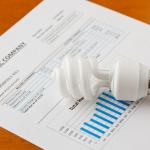
The Making of Your Electricity Bill: Understanding Its Components
You'll also see the impact of regional factors, building type, and the number of occupants. With prices set to rise up to 23.9% from July 2023, it's time you understood your bill's components.
Let's break it down together, so you can start saving on those energy costs.
Deciphering the Elements of Your Electricity Bill
To understand what's making up your electricity bill, it's crucial to know that this cost isn't just about energy usage. It also involves a daily supply charge and can even reflect the cost of specific appliances.
You're charged a variable rate based on your consumption, factoring in the number of appliances and individuals in your household. The billing structure also includes a fixed daily supply fee, a cost you'll incur regardless of your energy use.
Some energy providers offer a breakdown of appliance-specific costs, giving you a clearer picture of where your energy dollars are going. Therefore, understanding these elements is key to effective energy management.
Keep in mind pricing structures vary amongst retailers, and choosing the one that best aligns with your usage patterns can result in considerable savings.
The Impact of Household Size on Electricity Usage and Costs
It's clear that the size of a household significantly affects overall electricity usage and costs. When more people live under the same roof, there's typically an increase in the use of appliances and electronics, thus driving up energy consumption.
In fact, each additional household member can lead to a monthly cost increase ranging from $20 to $33. This increase is even more noticeable during periods of expected price rises, such as the one expected in July 2023.
The rise correlates with several factors, including stakeholder feedback, wholesale costs, network expenses, and environmental factors. Consequently, it's crucial that you understand these dynamics. By doing so, you'll be better equipped to manage your energy usage and minimize the impact of these increases on your budget.
Strategies for Reducing Your Electricity Bill
You're probably wondering how you can lower those monthly costs, aren't you?
Let's dive into some effective strategies.
Analyze your usage pattern and consider switching to a plan that aligns with it. Energy retailers offer plans tailored to various consumption habits.
Reduce your reliance on heaters and electric blankets. Instead, opt for hot water bottles, seasonal clothing, and bedding. By heating your home to a lower temperature and donning a jumper, you'll conserve energy.
Additionally, curtail the use of your dryer, a major electricity guzzler. Remember, every kilowatt you save not only reduces your bill but also lowers your carbon footprint.
With a little bit of effort and lifestyle adjustment, you can significantly decrease your electricity consumption.
Understanding your electricity bill's components can help you make informed decisions about your provider and energy usage.
Remember, your bill is based on consumption and daily supply charges, with some providers offering appliance-specific breakdowns.
With expected price increases of 20.8% to 23.9% from July 2023, it's crucial to consider strategies like switching plans or reducing heater and dryer use to save money.
Stay informed and proactive to better manage your energy costs.



